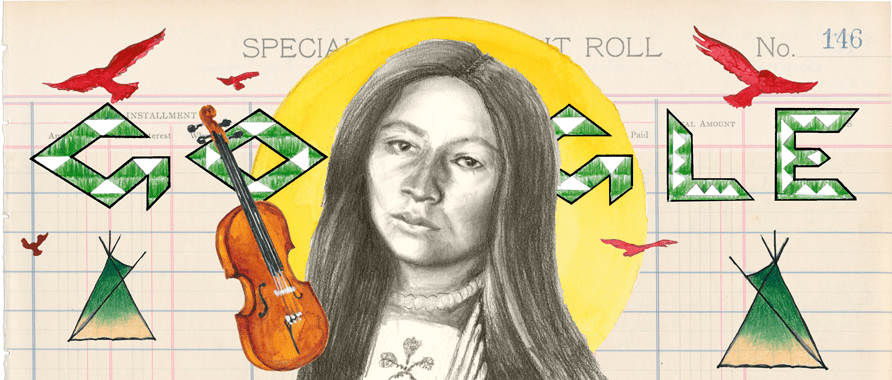[ad_1]

Native American writer and composer Zitkala-Å a. Google Doodle
It’s a fact that the United States has a long way to go when it comes to properly honoring Native American creatives on its soil—just last year, I See Red: Target, (1992) became the first painting by a Native American artist to be added to the collection of the National Gallery of Art in Washington, D.C. Nevertheless, today’s Google Doodle honors the Indigenous Yankton Sioux writer and musician Zitkála-Šá, who resisted multiple forced assimilation attempts in order to produce creative works that told Indigenous American stories. Specifically, Zitkála-Šá wrote an anthology of Dakota stories called Old Indian Legends, and also wrote the music and text for The Sun Dance, the first Indigenous American opera.
Born in 1876, Zitkála-Šá, whose name means “Red Bird†in the Lakota/Lakȟótiyapi language, left the reservation she grew up on in South Dakota when she was 8 years old in order to receive an education at a missionary boarding school called White’s Indiana Manual Labor Institute, which sounds just as deeply upsetting as it ended up being. Zitkála-Šá was forbidden from speaking her native language and forced to practice a religion she didn’t believe in, and these traumatic experiences fueled her desire to preserve Indigenous culture for generations of future readers. Later on in her life, Zitkála-Šá was trained in violin at the New England Conservatory of Music, and in 1900, she performed at the White House for President William McKinley.
Zitkála-Šá’s achievements in activism were just as monumental as her artistic ones: she co-founded and led as the first president of the National Council of American Indians in 1926, and her efforts were instrumental to the eventual passage of the Indian Citizenship Act of 1924. Additionally, the Google Doodle itself, which renders Zitkála-Šá’s face in soft detail, was created by the artist Chris Pappan; Pappan is of Osage, Kaw, Cheyenne River Sioux and European heritage.
[ad_2]
Source link






